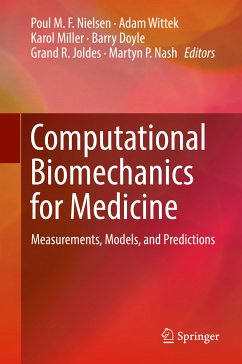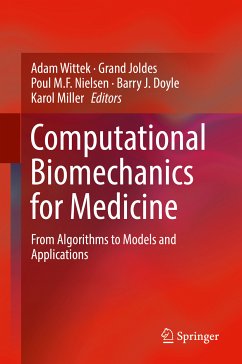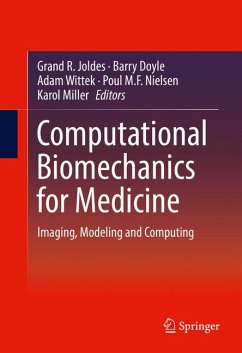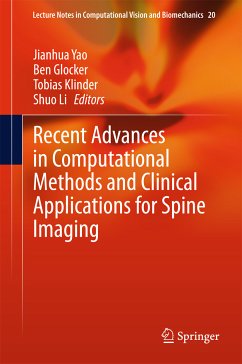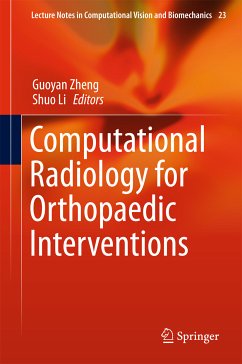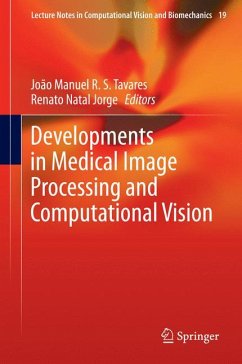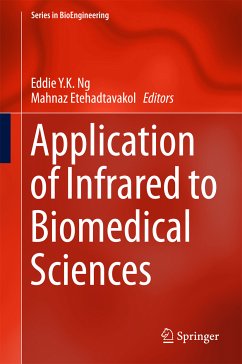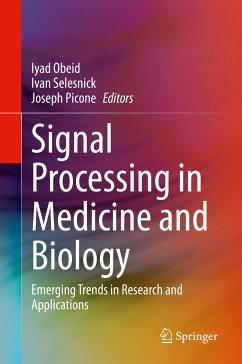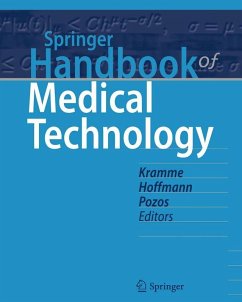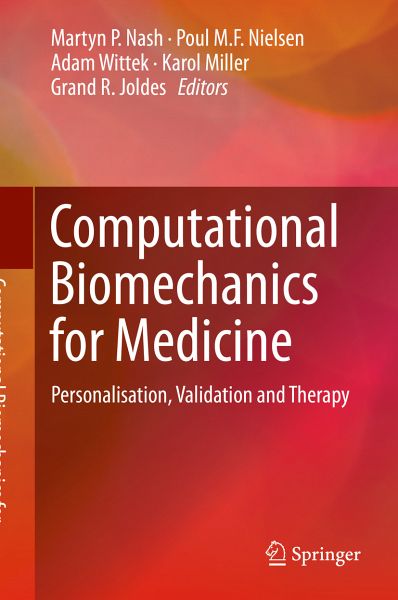
Computational Biomechanics for Medicine (eBook, PDF)
Personalisation, Validation and Therapy
Redaktion: Nash, Martyn P.; Joldes, Grand R.; Miller, Karol; Wittek, Adam; Nielsen, Poul M. F.
Versandkostenfrei!
Sofort per Download lieferbar
112,95 €
inkl. MwSt.
Weitere Ausgaben:

PAYBACK Punkte
56 °P sammeln!
This book contains contributions from computational biomechanics specialists who present and exchange opinions on the opportunities for applying their techniques to computer-integrated medicine, including computer-aided surgery and diagnostic systems. Computational Biomechanics for Medicine collects peer-reviewed chapters from the annual Computational Biomechanics for Medicine Workshop, in conjunction with the Medical Image Computing and Computer Assisted Intervention [MICCAI] Society conference. The works are dedicated to research in the field of methods and applications of computational biom...
This book contains contributions from computational biomechanics specialists who present and exchange opinions on the opportunities for applying their techniques to computer-integrated medicine, including computer-aided surgery and diagnostic systems. Computational Biomechanics for Medicine collects peer-reviewed chapters from the annual Computational Biomechanics for Medicine Workshop, in conjunction with the Medical Image Computing and Computer Assisted Intervention [MICCAI] Society conference. The works are dedicated to research in the field of methods and applications of computational biomechanics to medical image analysis, image-guided surgery, surgical simulation, surgical intervention planning, disease diagnosis and prognosis, analysis of injury mechanisms, implant and prosthesis design, artificial organ design, and medical robotics. These chapters will appeal to a wide range of researchers and students within the fields of engineering and medicine, as well as those working in computational science.
Dieser Download kann aus rechtlichen Gründen nur mit Rechnungsadresse in A, B, BG, CY, CZ, D, DK, EW, E, FIN, F, GR, HR, H, IRL, I, LT, L, LR, M, NL, PL, P, R, S, SLO, SK ausgeliefert werden.



